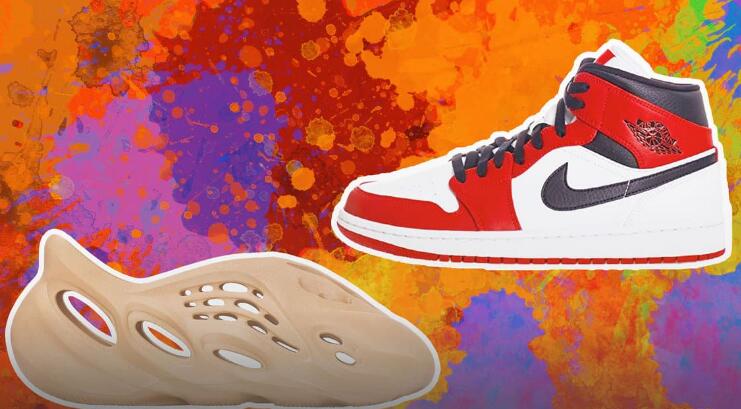From your $2 flip-flops to your $150 stilettos or running shoes, not all shoes are created equal — no matter the price or brand name. If you’ve ever peeled off your heels during a long day at work or taken off your tennis shoes after a long run only to find blisters or an ingrown toenail, you know your shoes can lead to pain if you’re not careful.
“Improper footwear can stress the back, knees, hips and feet by placing them in an unnatural position and cause improper alignment and function of joints, tendons and ligaments up the body,” said Allison Rottman, DPM, a podiatrist with Banner – University Medicine in Arizona. “Muscles in the lower and upper legs may have to work harder when shoes do not fit properly, and this causes fatigue and pain.”
Wearing proper footwear can not only help prevent foot pain, but it can also be good for your body, and dare we say, soles (get it?). Like with many things in life, your shoe choice matters.
Here are 7 common shoe mistakes and how you can fix them.
1. You try shoes on in the morning
When you try on shoes, it’s best to wait until later in the day rather than first thing in the morning. Why?
“The longer you’re awake and standing, the more your feet and legs tend to be swollen,” Dr. Rottman said. “Many who buy shoes don’t account for any swelling that naturally occurs and can accidentally buy shoes that are too tight.”
Takeaway: The next time you need to run out for a pair of shoes, wait until later in the day.
2. You’re wearing the wrong size shoe
The shoe size you were say 20 to 30 years ago may not be the same size you are today. But you swear you’re still a size 7.5; why is it the 8.5 fits better? Did your feet grow that much? Probably, said Dr. Rottman.
“As we age, our feet tend to lengthen and shoe sizes go up because tendons and ligaments stretch out and lose elasticity,” she said. “Certain weight fluctuations and medical conditions can cause changes to shoe sizes as well. As a result, a lot of people end up wearing larger shoe sizes later in life.”
Takeaway: It’s important to make sure your shoes have enough room to allow for natural feet swelling and allow room so your toes don’t hit the end of the shoe—which can damage toenails irreversibly. For running shoes particularly, Dr. Rottman suggested going up about half a size or even a full size, if your feet get very swollen.
3. You’re still wearing those worn-down shoes
They may be your favorite, but those shoes you bought 5, 10, 20 years ago are doing you more harm than good. Many of us only throw our shoes out when the sole is worn down or a heel falls off, but waiting this long can be a pain.
“Wearing worn-out shoes can lead to foot pain from plantar fasciitis, tendonitis, stress fractures and shin splints,” Dr. Rottman said. “This is because worn-out shoes lack the padding and support needed to protect our feet from damage. Worn-out soles of shoes from foot striking patterns can lead to unnatural gait, as well, which further exacerbates this problem.”
Takeaway: Depending on your activity level and the type of shoes you are wearing, you should consider replacing them between 6 to 12 months. If you really love your shoes, consider resoling them, or purchase two pairs of the same shoe to extend their shelf (or shoe) life.
4. You walk around barefoot
Are your shoes off as soon as you walk in the door? For some, taking your shoes off feels great, but for others, it can be a real pain. Standing barefoot on surfaces like tile and hardwood floors can put undue stress on your feet causing or making pain worse over time.
“Walking for long periods of time without padding and support, especially on hard surfaces, can lead to blistering, stress fractures, shin splints and overuse injuries, like tendonitis and plantar fasciitis,” Dr. Rottman said. “In addition, you can put your feet at risk for waterborne infections and athlete’s foot if you walk in and around pools.”
Walking barefoot around the house (and outdoors!) can also put your feet at risk for stepping on sharp objects, stubbing toes, breaking toes and injuring toenails, since they are not protected by shoes.
“And those with diabetes, neuropathy and peripheral vascular disease should be especially careful as any injury from stepping on something can lead to severe infection,” Dr. Rottman cautioned.
Takeaway: Purchase shoes just for indoor use and wear flip-flops or sandals in and around public pools, spas and other moist environments.
5. You’re wearing improper footwear for your activity
You might think it doesn’t hurt to wear your sneakers to go hiking, but you’d actually be teetering on the edge of foot pain or an ankle sprain. And walking across New York City in flip-flops may be a big flop after several blocks. That’s because not every shoe is meant for every activity, but it’s a common mistake many people make.
“Wearing shoes that are not right for the given activity make you prone to all manner of problems from blisters to broken bones, sunburn, trauma from stubbing the toes or things falling on parts of feet that are exposed,” Dr. Rottman said.
Takeaway: Minimize your risk of these problems and more by wearing the correct shoe for what you will be doing. If you’re going hiking, Dr. Rottman advised wearing hiking boots or high-top shoes for added ankle support, especially where trails are rocky. For sneakers and flip-flops, make sure you can’t easily bend them in half or twist the sole around easily. These are markers that the shoe or flip-flop is not very supportive.
6. Your high heels are too high
Speaking of wearing improper footwear. Your cute high heels may be a fashion necessity, but they can wreak havoc on your feet with bunions, hammer toe, plantar fasciitis and more.
Takeaway: If you’re vertically challenged or love the look, Dr. Rottman shared a few workarounds you can try and still keep your feet happy:
- Wear round-toe shoes, so your toes have more wiggle room.
- Avoid stilettos.
- Look for high heels with a block heel or wedge, less than 2 inches in height.
- Limit the time you are walking around in them.
- Don’t forget strappy sandals. There are so many cute supportive sandals out there these days.
7. You don’t wear shoes with arch support
Do you overpronate or underpronate? Generally, most of us fall somewhere in this spectrum — we are either more flat-footed or have high-arched feet. While for some, knowing or not knowing this isn’t a big deal, but as we age and go through other body-changing life events, it can be especially important to know.
Takeaway: If you’re feeling discomfort, tingling or pain in your toes, heels or balls or arches of your feet, talk to your health care provider or a podiatrist. You may need to purchase shoes or over-the-counter inserts that provide you additional heel or arch support.



